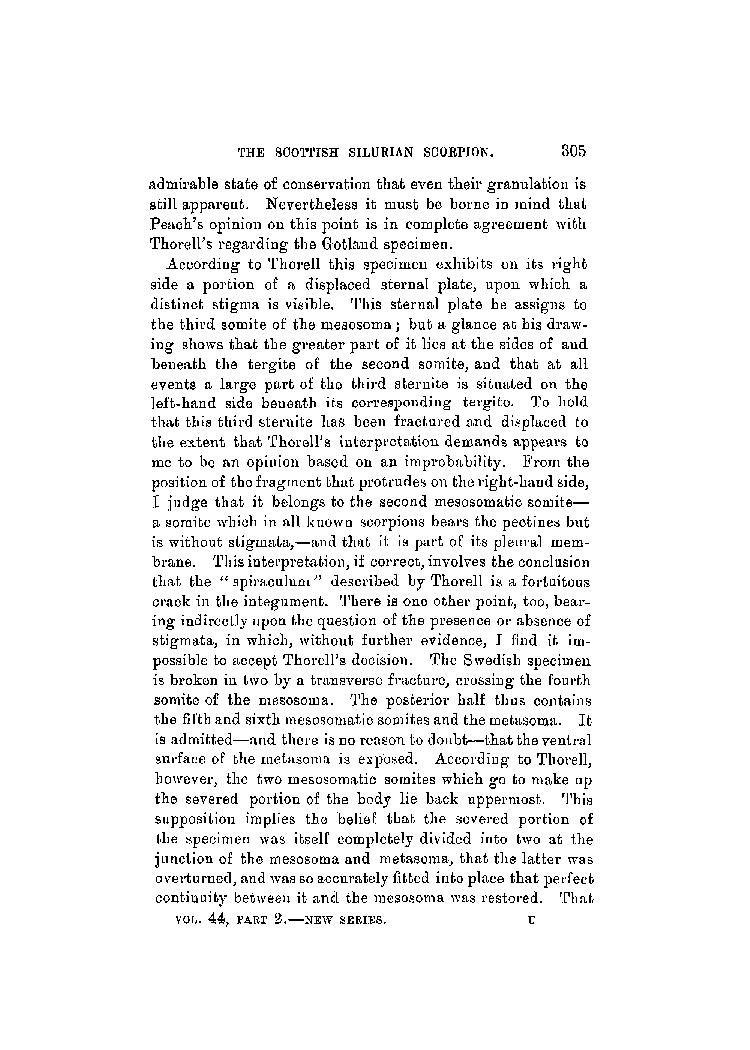admirable state of conservation that even their granulation is still apparent. Nevertheless it must be borne in mind that Peach's opinion on this point is in complete agreement with Thorell's regarding the Gotland specimen.
According to Thorell this specimen exhibits on its right side a portion of a displaced sternal plate, upon which a distinct stigma is visible. This sternal plate he assigns to the third somite of the mesosoma; but a glance at his drawing shows that the greater part of it lies at the sides of and beneath the tergite of the second somite, and that at all events a large part of the third sternite is situated on the left-hand side beneath its corresponding tergite. To hold that this third sternite has been fractured and displaced to the extent that Thorell's interpretation demands appears to me to be an opinion based on an improbability. From the position of the fragment that protrudes on the right-hand side, I judge that it belongs to the second mesosomatic somite—a somite which in all known scorpions bears the pectines but is without stigmata,—and that it is part of its pleural membrane. This interpretation, if correct, involves the conclusion that the "spiraculum" described by Thorell is a fortuitous crack in the integument. There is one other point, too, bearing indirectly upon the question of the presence or absence of stigmata, in which, without further evidence, I find it impossible to accept Thorell's decision. The Swedish specimen is broken in two by a transverse fracture, crossing the fourth somite of the mesosoma. The posterior half thus contains the fifth and sixth mesosomatic somites and the metasoma. It is admitted—and there is no reason to doubt—that the ventral surface of the metasoma is exposed. According to Thorell, however, the two mesosomatic somites which go to make up the severed portion of the body lie back uppermost. This supposition implies the belief that the severed portion of the specimen was itself completely divided into two at the junction of the mesosoma and metasoma, that the latter was overturned, and was so accurately fitted into place that perfect continuity between it and the mesosoma was restored. That
